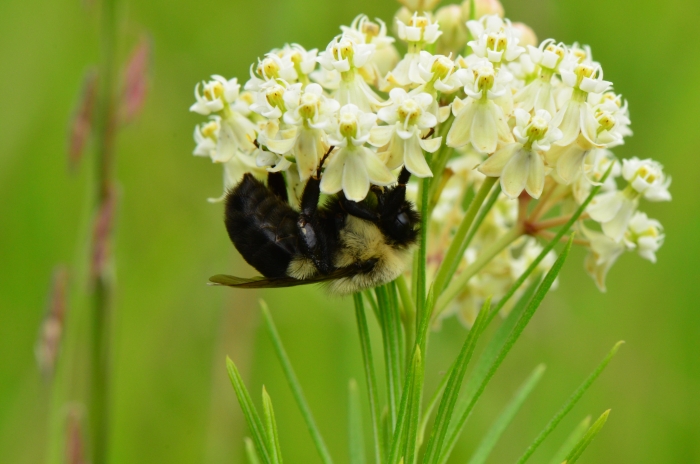Whorled Milkweed
(Asclepias verticillata)
Whorled Milkweed (Asclepias verticillata)
/
/

Joshua Mayer
CC BY-SA 2.0





















































Estimated Native Range
Summary
Whorled milkweed is valued for its ability to attract and support butterflies, including the monarch butterfly, which uses milkweed as a host plant for its larvae. It is often used in native plant gardens, butterfly gardens, and restoration projects. This milkweed is relatively low maintenance, tolerating drought and poor soil conditions. It prefers full sun to part shade and can adapt to soils with slow drainage. While it is not aggressive, it can spread through rhizomes and self-seeding, which should be considered when planting in small garden spaces.CC BY-SA 4.0
Plant Description
- Plant Type: Herb
- Height: 1-2.5 feet
- Width: 1-2 feet
- Growth Rate: Moderate
- Flower Color: Green, White
- Flowering Season: Summer, Fall
- Leaf Retention: Deciduous
Growth Requirements
- Sun: Full Sun, Part Shade
- Water: Low, Medium
- Drainage: Slow
Common Uses
Bank Stabilization, Bee Garden, Bird Garden, Border Plant, Butterfly Garden, Deer Resistant, Drought Tolerant, Erosion Control, Fragrant, Groundcover, Hummingbird Garden, Low Maintenance, Rabbit Resistant, Street Planting
Natural Habitat
native to a wide range of habitats in eastern and central North America, including glades, dry prairies, and open woodlands, as well as disturbed areas such as pastures, fields, and roadsides
Other Names
Common Names: Horsetail Milkweed, Eastern Whorled Milkweed, Asclépiade Verticillée
Scientific Names: , Asclepias verticillata, Asclepias galioides, Asclepias parviflora, Asclepias verticillata var. galioides, Asclepias verticillata var. leptophylla,
GBIF Accepted Name: Asclepias verticillata L.